Seoul, South Korea – Tuesday, June 7th to Friday, June 10th, 2011
 My flight from Shanghai to Seoul would be the last airplane I’d take until I’d depart from Tokyo back to the U.S. in nearly three week’s time. Everything in-between would be entirely ground- or water-based transport, making it seem much more like a complete journey. Exploring Shanghai was great, but it also felt a bit removed from the rest of my month-long Asia trip to come, and I had already spent plenty of time in other Chinese cities before that. Apart from having different languages, there was a feeling about South Korea that was very different from the Chinese milieu I had spent the past five months immersed in. This was the moment my backpacking adventure really felt like it had begun.
My flight from Shanghai to Seoul would be the last airplane I’d take until I’d depart from Tokyo back to the U.S. in nearly three week’s time. Everything in-between would be entirely ground- or water-based transport, making it seem much more like a complete journey. Exploring Shanghai was great, but it also felt a bit removed from the rest of my month-long Asia trip to come, and I had already spent plenty of time in other Chinese cities before that. Apart from having different languages, there was a feeling about South Korea that was very different from the Chinese milieu I had spent the past five months immersed in. This was the moment my backpacking adventure really felt like it had begun.
And it really would be an adventure. I was sure of it. I only had a light itinerary outline sketched out in my head, but apart from my JR Rail Pass for Japan and my first hostel in Korea, had literally none of my other travel or accommodations booked yet. After a full day of sight-seeing or theme parking, I’d finish the evening at the hostel’s computer (or nearby cyber-cafe if none was available) to make my next travel plans, trying to stay at least two days ahead in case any one night encountered internet failures or I was simply too exhausted to plan. I already had some close calls in Shanghai, and an improperly researched bus or train route could mean missing a park or wasting an entire day.
I only had a light itinerary outline sketched out in my head, but apart from my JR Rail Pass for Japan and my first hostel in Korea, had literally none of my other travel or accommodations booked yet. After a full day of sight-seeing or theme parking, I’d finish the evening at the hostel’s computer (or nearby cyber-cafe if none was available) to make my next travel plans, trying to stay at least two days ahead in case any one night encountered internet failures or I was simply too exhausted to plan. I already had some close calls in Shanghai, and an improperly researched bus or train route could mean missing a park or wasting an entire day.
Yet, surprisingly, despite how precarious my travel felt, things had gone relatively smoothly so far. No running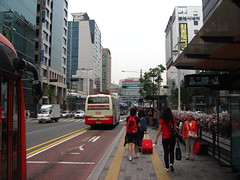 to catch the last connection a minute before departure, or else overnighting in a train station the way several of my European travels the previous year had gone. I figured it would be a matter of time, but (SPOILER ALERT) it never happened. There would be some rainy days requiring itinerary re-shuffling, but across my entire month-long journey, the would never be any dramatic moments of unplanned travel adventures. Plenty of the planned adventures were of course very memorable, but I was almost a bit disappointed that things would never go off the rails, requiring the excitement of total improvisation.
to catch the last connection a minute before departure, or else overnighting in a train station the way several of my European travels the previous year had gone. I figured it would be a matter of time, but (SPOILER ALERT) it never happened. There would be some rainy days requiring itinerary re-shuffling, but across my entire month-long journey, the would never be any dramatic moments of unplanned travel adventures. Plenty of the planned adventures were of course very memorable, but I was almost a bit disappointed that things would never go off the rails, requiring the excitement of total improvisation.
The bigger challenge was money. For those wondering, I was able to finance this travel through the surplus amount of my student loans for living expenses. If you want to be responsible you should return these extra funds, but I figured that it was better to use the money now when I had the time, and not sweat a few thousand extra dollars later in life when I’d (hopefully) have a decent-paying career but not necessarily the opportunity. Looking back as I write this nearly a decade later (and nearly finished paying off those loans), I’m still happy with that decision.
return these extra funds, but I figured that it was better to use the money now when I had the time, and not sweat a few thousand extra dollars later in life when I’d (hopefully) have a decent-paying career but not necessarily the opportunity. Looking back as I write this nearly a decade later (and nearly finished paying off those loans), I’m still happy with that decision.
However, while the money was able to get me a long way, I soon realized I had been over-optimistic in how far I could stretch that fixed fund amount while still paying for near-daily amusement park tickets, not exactly a cheap pursuit. Fortunately, my parents were able to make a direct deposit of a few thousand dollars, allowing me to finish the travel as I intended. I’m still hugely grateful to them, as it was a large amount for their savings as well, and for many people that lifeline would not have even been an option.
I’m still hugely grateful to them, as it was a large amount for their savings as well, and for many people that lifeline would not have even been an option.
Another lifeline was Mia, the owner of the Miso Guest House near Hongik University. Mia was not only able to offer a few standard travel booking services (such as conveniently scheduling me for a tour of the Korean Demilitarized Zone on Thursday that would pick up directly at the hostel), but also spent the better part of an hour on the phone to help me book my hydrofoil transport between Korea and Japan in less than a week’s time, after it refused to accept my credit card and the only option was to call a Korean language exclusive phone number. Even if you’re backpacking solo, you can’t get very far being completely alone.
It was a lot of effort to get to this point, but now that I was here, I had a relaxed, open-ended day ahead of me to explore Seoul by metro and by foot, starting in Dongdaemun Design Plaza.
This is a modernist plaza designed by Zaha Hadid around the old Seoul fortress walls and east gate. Unfortunately it wouldn’t be finished for a couple more years, although the nearby Cheonggyecheon river parklands made for a pleasant area to explore.
The biggest feature was the historic Heunginjimun Gate, otherwise known as the “Great East Gate” of the Fortress Walls of Seoul. First built in 1398, this current version of the rebuilt structure was finished in 1869.
A hillside along the historic walls revealed an overview of the rapidly modernizing city.
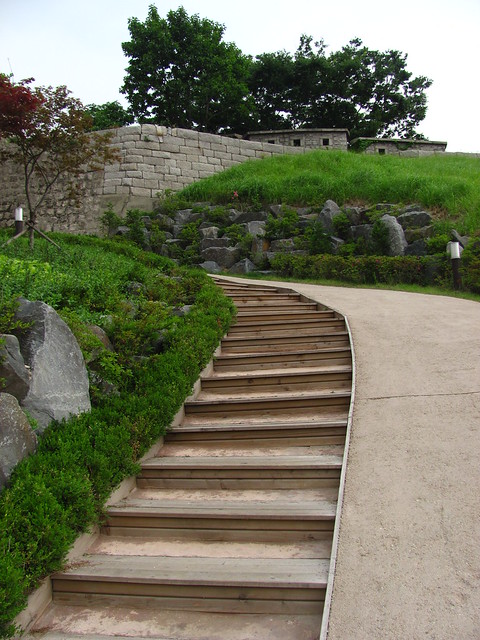



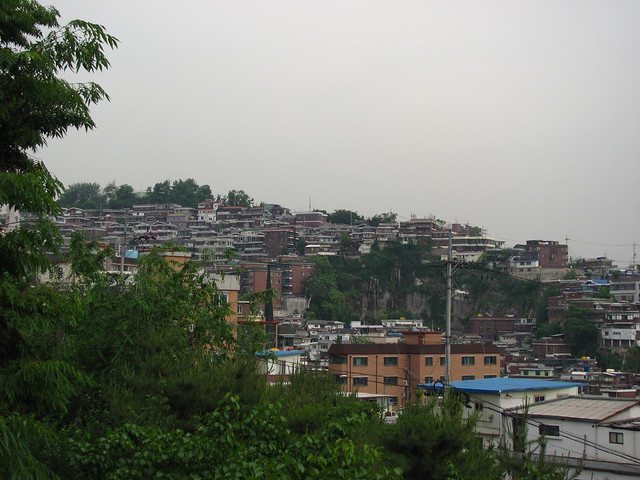
 Following the Cheonggyecheon stream down into a modern commercial district of Seoul.
Following the Cheonggyecheon stream down into a modern commercial district of Seoul.
Even in the heart of a bustling metropolis, wildlife was still plentiful.

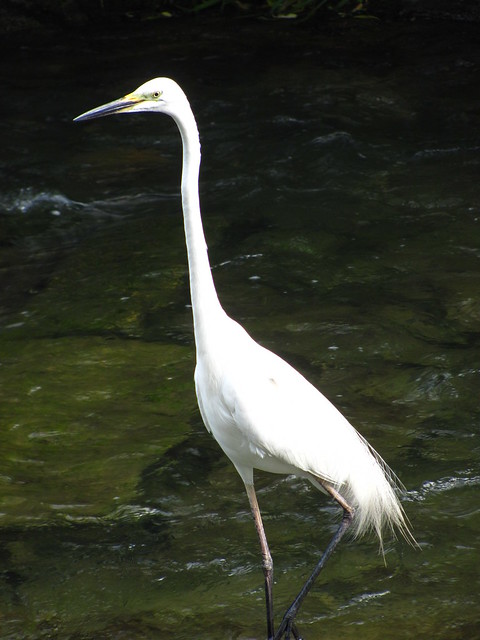


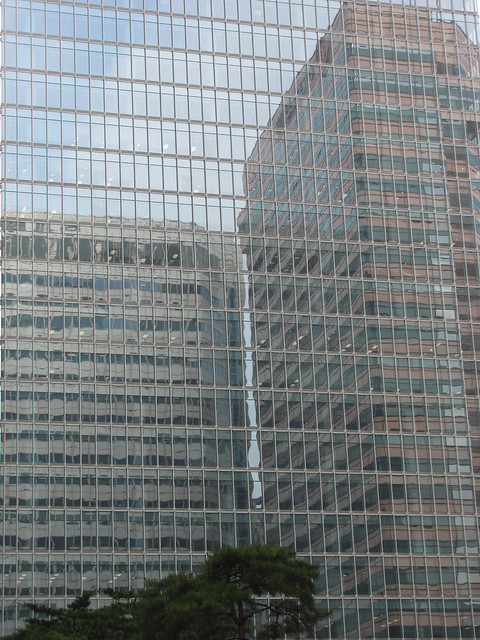

 In addition to nature, several historical and cultural sites also integrate amidst the modern buildings, like this monument to King Gojong built in 1902.
In addition to nature, several historical and cultural sites also integrate amidst the modern buildings, like this monument to King Gojong built in 1902.




 The river eventually led to Gwanghwamun Plaza, which opened in 2009 to feature several statues, fountains, and museums.
The river eventually led to Gwanghwamun Plaza, which opened in 2009 to feature several statues, fountains, and museums.
The first of two significant statues is dedicated to Admiral Yi Sun Shin, who led Korea’s victory against a Japanese invasion during the Imjin War from 1592 to 1598.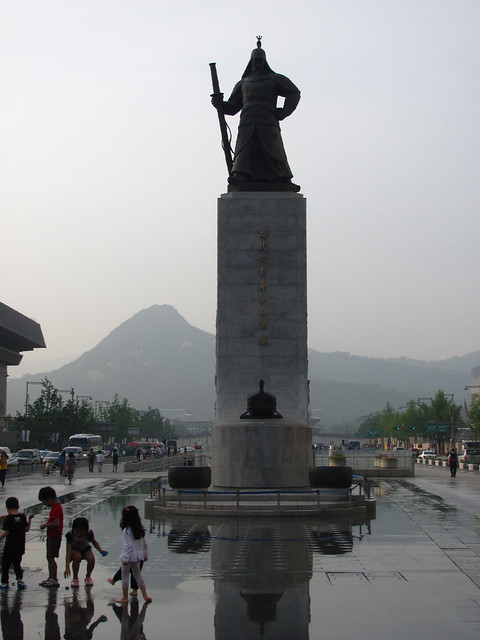
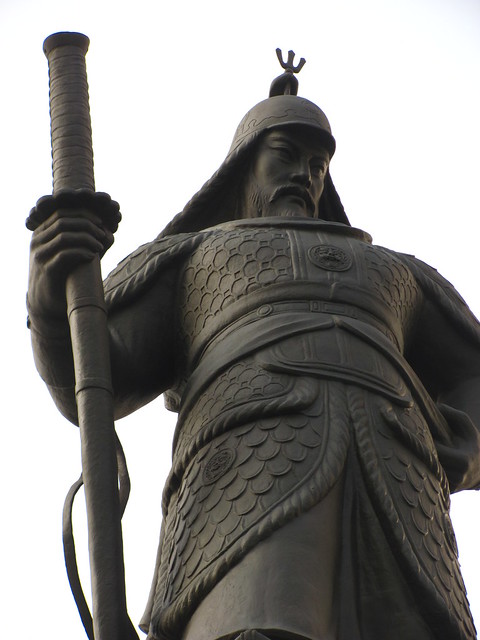
 Further ahead is a statue of King Sejong, who ruled from 1397 to 1450 and is often considered Korea’s greatest ruler.
Further ahead is a statue of King Sejong, who ruled from 1397 to 1450 and is often considered Korea’s greatest ruler.
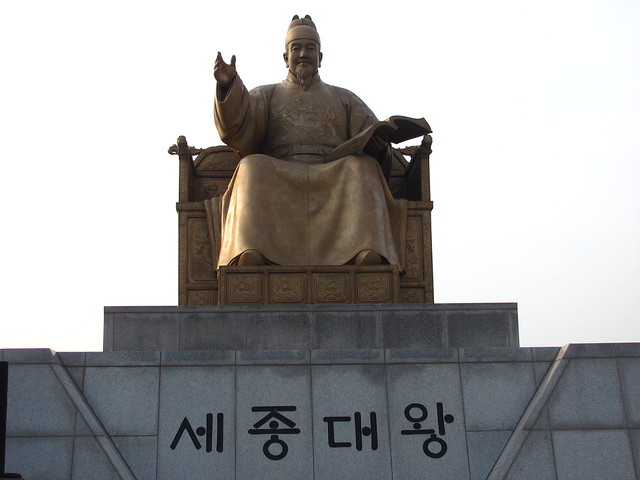 Below the statue was an entrance to a small underground museum, free of admission, dedicated to the story of King Sejong.
Below the statue was an entrance to a small underground museum, free of admission, dedicated to the story of King Sejong.
One of Sejong’s most important contributions that can still be seen everywhere across Korean culture today was the development and introduction of the modern Korean written language, Hangul. While on the surface it might look similar to Chinese writing, the two couldn’t be more different in philosophy. Chinese was used in Korea during Sejong’s time, but the complex system of countless unique symbolic characters made it difficult to teach to those who weren’t part of Korea’s upper society. Hangul, by contrast, is a phonetic written language, separated into five basic consonants and three vowel sounds, each represented by a simple shape (loosely corresponding to the mouth’s physiology while pronouncing it). Assemble these simple components together into a stacked character and read it like a clock to pronounce the full syllable, and there you have Hangul; often claimed to be the most scientific written language in the world. (It helps to be an absolute monarch if you want to invent a new language or written system that people actually use. If L. L. Zamenhof wanted more people to speak Esperanto he should have figured out how to become a king.)

 The plaza also connects to the historic Gwanghwamun gate and Gyeongbokgung Palace, sort of the Korean equivalent of Beijing’s Forbidden City. This is a large complex that includes a couple more museums that I wouldn’t have time (or money) to explore on this visit.
The plaza also connects to the historic Gwanghwamun gate and Gyeongbokgung Palace, sort of the Korean equivalent of Beijing’s Forbidden City. This is a large complex that includes a couple more museums that I wouldn’t have time (or money) to explore on this visit.

 During the couple of days I spent in Seoul, I also made the intention to visit the National Museum of Korea, the largest museum in the world dedicated to Korean culture and history.
During the couple of days I spent in Seoul, I also made the intention to visit the National Museum of Korea, the largest museum in the world dedicated to Korean culture and history.
While I was looking forward to the free admittance museum, similar to national museums I explored in China or Malaysia, an error in my research revealed that it wasn’t open today.
Disappointing, but in a small way it was a relief, as I wasn’t sure if I’d have enough time for the couple of other stops I had in mind for that afternoon. A small art park featuring both historic and modern installations just outside the museum was free to explore before moving on.
My next stop might be recognizable to fans of Korean cinema.
Starting to look familiar?
How about now?
No? Okay, this is the Wonhyo Bridge, which along with the nearby Mapo Bridge was made famous from Bong Joon-ho’s 2006 monster movie The Host. I first saw it as a midnight movie at my local film festival the summer it was released, and now five years later I got to see in person where the most famous scene was shot. Not a very typical tourist site, but at least it was special to my interests.
Director Bong later went on to win the Academy Awards for best picture and director for his 2019 film Parasite. Pleased to say I was ahead of the curve on the #BongHive, at least in the west.
Of course, seeing it in person is radically different than how it was in the film. While the film shows a popular riverfront park, at the hour I visited it appeared much wider, emptier, and distant from most city activity. I kinda hoped to find a fried squid vendor and eat it along the river, but that wasn’t to be the case.
However, I wasn’t completely alone in the park, and one person even offered to take my photo.
 This cute little park nearby wasn’t featured in the movie.
This cute little park nearby wasn’t featured in the movie.


 My final stop for the first evening was to the N Seoul Tower, glimpsed standing upon the hill in the distance. To get to the top requires several steps.
My final stop for the first evening was to the N Seoul Tower, glimpsed standing upon the hill in the distance. To get to the top requires several steps.
First, a short funicular up the lower portion of the hill.
Next, a cable car carries us most of the distance to the top of the hill.
A few more stairs to reach the top of the hill.
Pass by the geographical center of Seoul.
Tickets, lobby, and an elevator.
And, finally, there’s the view from the 236 metres (774 ft) tall N Seoul Tower!
Admittedly, Seoul isn’t filled with ambitious starchitecture that makes it as interesting to view from on high, such as the way that Shanghai appears from the Oriental Pearl Tower. But with patterns from thousands of lights extending into all directions, it’s still a worthwhile experience.
Even in the darkness of night, there’s still lots of small discoveries to make.



While it may not have a roller coaster inside like the Oriental Pearl Tower, the N Seoul Tower does at least have this cheesy “shocking step” gag.
Back on the ground level, looking up at the N Seoul Tower in the night sky.
The first night I arrived I decided to find a restaurant near the hostel to sample whatever Korean cuisine looked appealing, but had little idea what to look for. Most restaurants seemed to host larger group parties, but I finally found a place that seemed inviting. Unfortunately, the menu also was geared largely towards larger groups; I ended up ordering a Korean spicy rice cake dish which, while good, was quite heavy and easily enough to feed 3-4 people. I was able to strike up conversation with a couple of nearby diners, and they confirmed that most Korean restaurants are ill-suited to solo diners, as the expectation is to share large dishes in a social setting. I learned my lesson the first night and the next night found a row of street food vendors, a much better meal solution for a solo traveler on a budget.
My overall impression of Seoul was that it was an extremely sociable, livable city, full of vibrancy at all hours, even if it didn’t always have the most to offer tourists within city limits. That’s not counting the theme parks, which I would easily fill my second full day from early morning to late night to experience three in a single day.


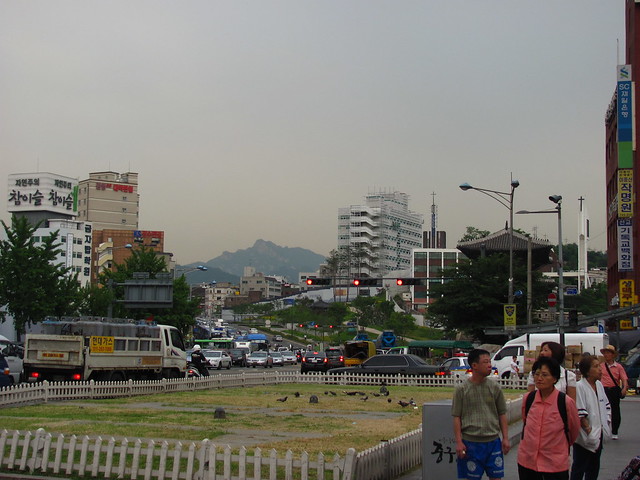






















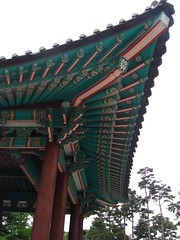





























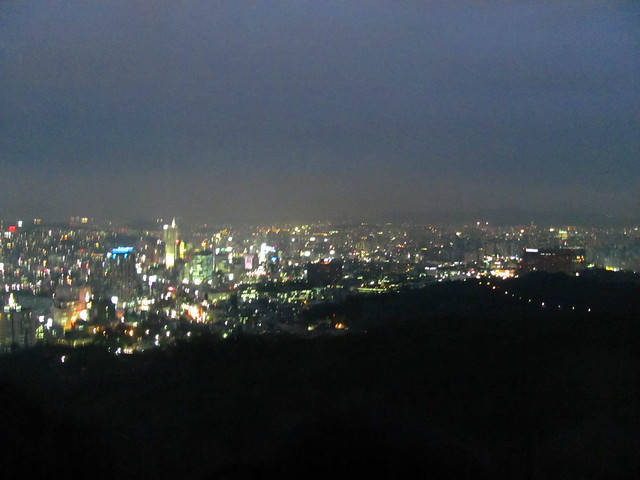







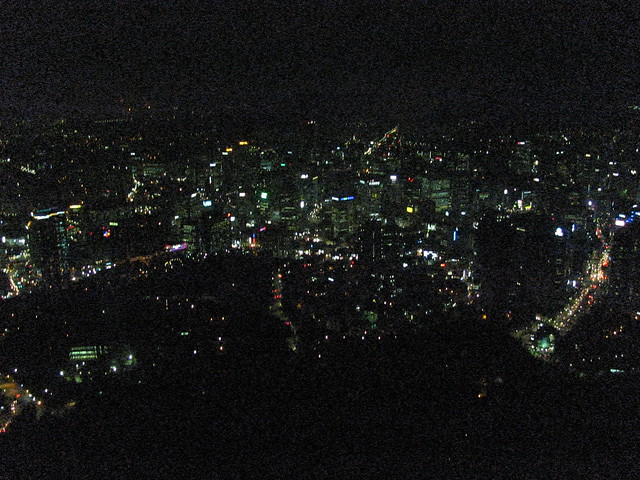










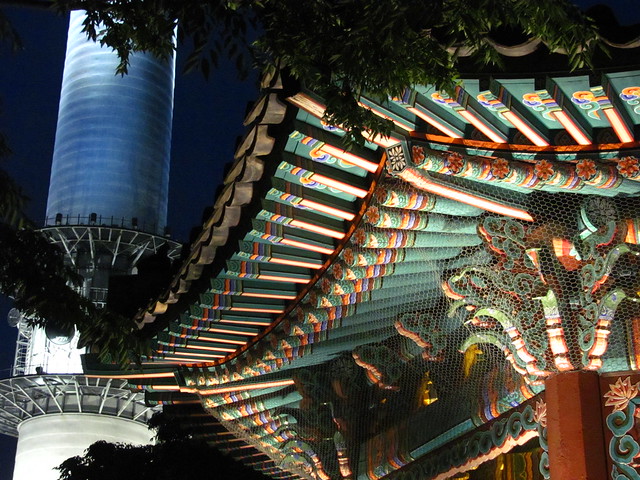





Comments